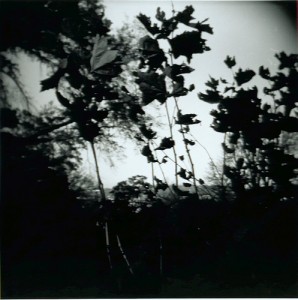Art photography with real film

A recent study asked professional photographers if they were still using film, and 45% said they had never stopped, even though they also used digital. Although digital cameras have improved now to the point where a digital photo and a film photo are pretty much comparable in dpi (you know, if you have a good printer), film is still tenaciously clinging on.
What are the upsides to film? It still gives the best pictures, in terms of sheer quality, by a small margin — you can get tonal ranges from film that you just can’t get from digital, and, depending on the film, you can blow it up indefinitely with only a slight grain. Want a wall-sized mural of Angkor Wat? You got it, if you can find the printer.
Also, most toy and all antique cameras take film; you can get some breathtaking artwork from these cameras, a truly unique take that transcends the usual picture-of-a-pretty-flower-at-sunset traveling art photography. Consider the Holga’s dramatic vignetting, the Lomo’s lush coloring, and the Diana’s soft focus. Taking art photography on the road is both easy and appealing, and allows you a new way to look at the world, without worrying about breaking, losing, or having your fancy SLR digital camera and lenses stolen from under your nose.
Finding film and getting it developed also isn’t as hard as you might think; online stores like Freestyle Photo and B&H have discounted film in all sizes (regular 35mm up to sheet film for those cameras you see in car commercials), as well as some cameras, and tools you might need for setting up your own mini-darkroom. Learning how to develop your own black and white pictures is not that hard, and is a really fun skill to learn — color, unfortunately, you need a giant machine for.
If you don’t want to try and set up a portable darkroom in the bathroom of your hostel, you can mail film to several developing locations, depending on where in the world you are. You might have better luck with finding walk-in places to develop film in equally developing countries. Don’t just check drugstores, since their machines are likely to be subpar, but look for photography equipment rental stores, or places that provide slide processing. It may cost a wee bit more to shoot film, but trust me, the experience is totally different than shooting digital; neither is better, but it’s worth trying film and expanding your horizons.

Category: Notes from the collective travel mind